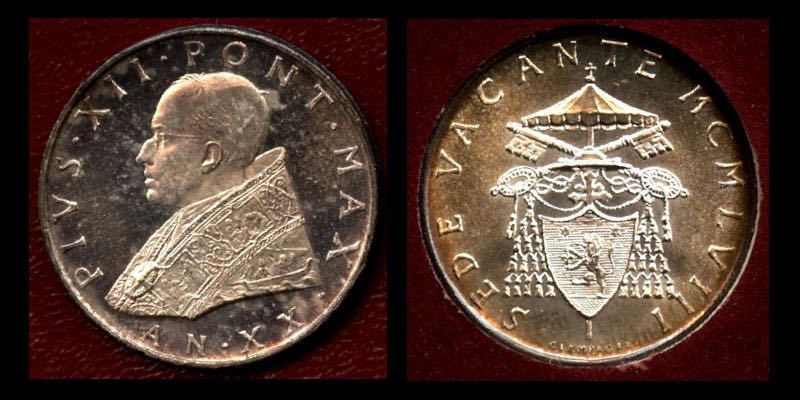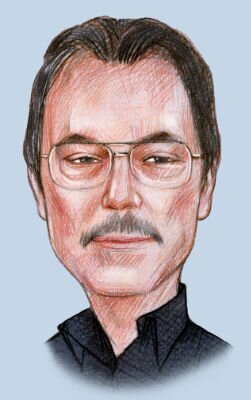
Pope Francis has died.
We should all pray for his eternal rest and that perpetual light shine upon him, as we should for everyone who leaves this life, both as a spiritual work of mercy and in hope that having reached Heaven, in part through our prayers, he will intercede for us.
It was not really a surprise. He was 88 years old and suffered from numerous diseases. Given his health over the last few months, the wonder is that he lived as long as he did. For most of this year, checking the news we would have not been startled to learn that he had died since the last time we checked the news.
The timing of his death — Monday in the Octave of Easter, a day after his last public appearance — is remarkable. Those of us who pay attention to such things remember that on Easter 2016 the great Mother Angelica died, also after extended illness. I remember learning of it as I left Mass that Easter and not being sad but happy. There was nothing that could have been more appropriate. But she died in Alabama, not Rome.
Changes in the Vatican always raise an eyebrow because, though it is a place of immense holiness, it has a distinctly sinister underbelly. It is roundly believed that Francis became pope because Benedict XVI, victim of skullduggery, was forced to resign. This belief is not just speculation among the laity, either. There is still common discussion of one Anabale Bugnini, a high Vatican official who played a considerable role in the changes brought about by the Second Vatican Council. He was accused of being a Freemason, which is forbidden, and his having tinkered with some ceremonies and reforms. Nothing was ever proved, but in 1976 he was made pro-nuncio to Iran, a considerable demotion. Some believe that the last valid Roman Missal is the one from 1948, before Bugnini was involved with its compilation. (I like it because the readings come from the Knox Bible.)
The circumstances of the death of John Paul I, who was pope for 33 days in 1978, were so suspicious that they at least partially inspired The Godfather Part III. (John Paul I’s wasn’t the shortest papacy. Stephen II the First was pope for three days. His death before his consecration is why some say there have been 267 popes and some say there have been only 266.)
As a result, Francis having died the day after Easter started whispers that it was maybe just a little too convenient. It has not grown above whispering, but in the Vatican suspicions never go away. Modern conspiracy theorists have nothing on the Church.
At the Papal Basilica of St. Paul Outside the Walls there are portraits in mosaic of every pope. There isn’t much space left for future popes. The legend is that when there is no more room the world will end. (Or maybe Paul Outside the Walls will just burn down again.)

Francis having died otherwise unremarkably, the news coverage is, as it tends to be, fairly poor. It is filled with small, meaningless details now given great weight. This is like the obsession with baseball statistics (“He’s the only second-baseman who actually had to repeat second-grade.” “Well, it seems to have done him good!”). As has become customary, Francis is portrayed as the very best pope ever. This is in part, too, because his views were more in keeping with the liberal notions of people in the news media. The anguished mourning that is being reported isn’t actually reflected as much in the Church itself. (I wrote about Francis here, four years ago, and since then I have found no cause to change my opinion.) A common sentiment among Catholics these dozen years has been — and yes, I’ve heard it myself many times — is “the Church has survived bad popes before.” Those who favor tradition in the Church found no favor in Francis, nor he in them.
We mustn’t be surprised to see the upcoming conclave covered as if it were a political convention. Regular news people know no more about the Church than they do about any other subject, which is to say they know little, and what they do know is wrong. The fact is, those who know aren’t saying, and those who are saying don’t know. If you are interested in coverage of the conclave and surrounding ceremonies, delivered by people who know what they’re talking about, EWTN is the place to go. It’s what I’ll be following from now through the conclave.
For a precise, knowledgeable, in-depth view, I’d add Damian Thompson’s Holy Smoke. (This discussion, hours after Francis died, is excellent.)
The details of what happened, is happening, and will happen are so complicated that they would run to hundreds of pages even if I knew them all, which I don’t. So let me provide instead some information that isn’t likely to be covered elsewhere but that you might find as fascinating as I do.
As its own country, Vatican City (the site of the Vatican) produces its own postage stamps (since it was formally established in1929) and currency. These depict the pope.
Minting Vatican coins goes back to the time, from 756 to 1870 A.D., when much of what is now Italy comprised the Papal States, established by Pope Stephen II the Second (or Stephen III to those of us who recognize the Stephen II the First). The currency was the Roman scudo until 1866, the Papal lira for the next four years, and (to make an extremely long and convoluted story short) the Vatican lira after that, until Italy adopted the Euro in 1999, though Vatican City has minted its own coins throughout and though joined to Italy monetarily is not a member of the European Union.
Immediately on the death of a pope, money and postage stamps are traditionally replaced. But with what? There isn’t a new pope yet. What takes his place?
When there is no pope, the papacy is “sede vacante,” literally “empty seat.” There is no one occupying the Chair of Peter. (This is different from the “sedevancantism” cult, which rejects everything the Church has done since the beginning of the Second Vatican Council, meaning that in in the view of sedevacantists the last legitimate pope was Pius XII in 1958. The Church is rowdy in many ways.) So when the Chair of Peter is empty, special sede vacante currency and stamps are issued.
Over the years I’ve collected a few Papal coins, from a couple minted in the 1500s (and from their condition I’d guess that they have spent a while covering the eyes of catacomb-dwellers), a couple from the 18^th^ and 19^th^ centuries, and some coins from my own lifetime. I’ve found sede vacante coins to be of special interest, my initial idea being that in circulation for only a short time they must be rare. (They’re not.) The pride of my small collection is from 1978, when there were sede vacante coins between the death of Paul VI and John Paul I, and between John Paul I and John Paul II. Though only a little more than a month apart, they were separate strikes.

The sede vacante coins are commemoratives, in the way that you can get commemoratives and proofs (super shiny versions of ordinary coins) from the U.S. Mint. While they are legal tender, they’re not meant to be spent, and anyone who popped ‘em into a vending machine would be rightly thought less bright than the coins they were spending. It’s not as if the Swiss Guards go out and replace the coins in everyone’s pockets. But the commemoratives are limited in the period they’re issued. They can be acquired, when they are available, from the Vatican.
I also have the John Paul I commemorative, though it is a bit of an exception. Sede vacante coins can be cranked out in no time, but coins bearing the images of popes take a while to sculpt and produce, so by the time John Paul I’s coin was ready there was already John Paul II. The coin was minted, anyway. (I do not know if there were coins for the first Stephen II, but I kind of doubt it. He lived and died in the eighth century, after all.) Until the switch to the euro, papal commemoratives were silver and in 1000-lira denomination. Sede vacante pre-euro issues were silver and 500-lira. As I understand it, there have been sede vacante sets available in other denominations, though I’ve not seen any. For some reason Vatican coins since the switch from lira have not interested me, though I have a few non-sede-vacante Vatican coins, both in lira and in euros or fractions thereof, made for normal circulation.
A lot of pre-euro Vatican coins are strange but most are not interesting to me, either, unless they are very old or issued during the papacy of a particularly remarkable pope, in which case they tend to be very expensive. I do have a Pius XII 500-lira coin (he’s wearing glasses in his portrait) from the year he died, 1958, and the sede vacante coin that followed his death, also in 1958.
But the John Paul I sandwich of the pope between two empty chair coins, all from the same year, I have found fascinating.
Of course, I’d find a similar set, from the three-day papacy of the original Stephen II, even more so.
But even more recent ones give a sense of the rich cultural, religious, and yes, political history of this remarkable Church, which we’ll see mostly glossed over in the coming weeks.

Dennis E. Powell is crackpot-at-large at Open for Business. Powell was a reporter in New York and elsewhere before moving to Ohio, where he has (mostly) recovered. You can reach him at dep@drippingwithirony.com.
You need to be logged in if you wish to comment on this article. Sign in or sign up here.
Start the Conversation